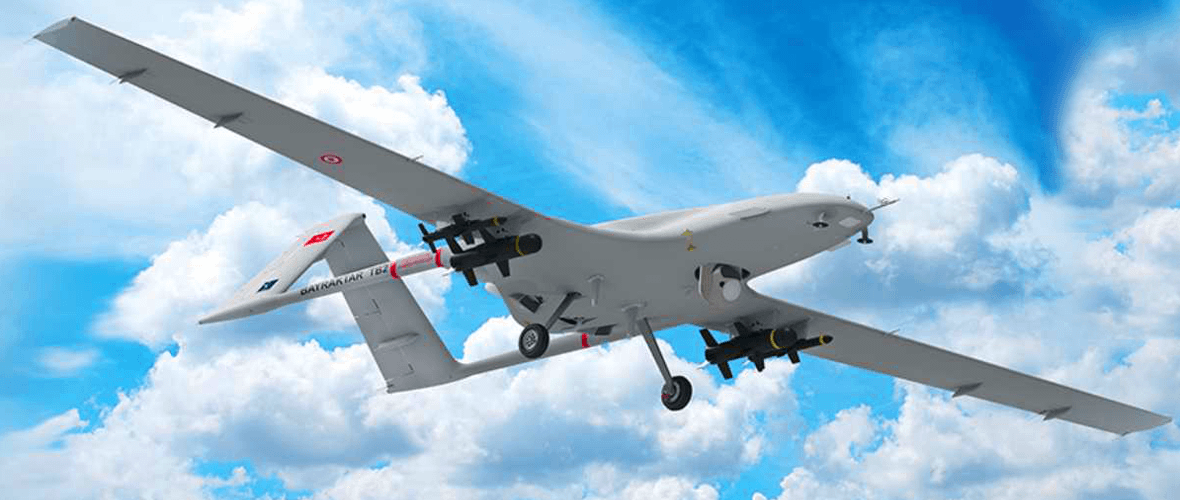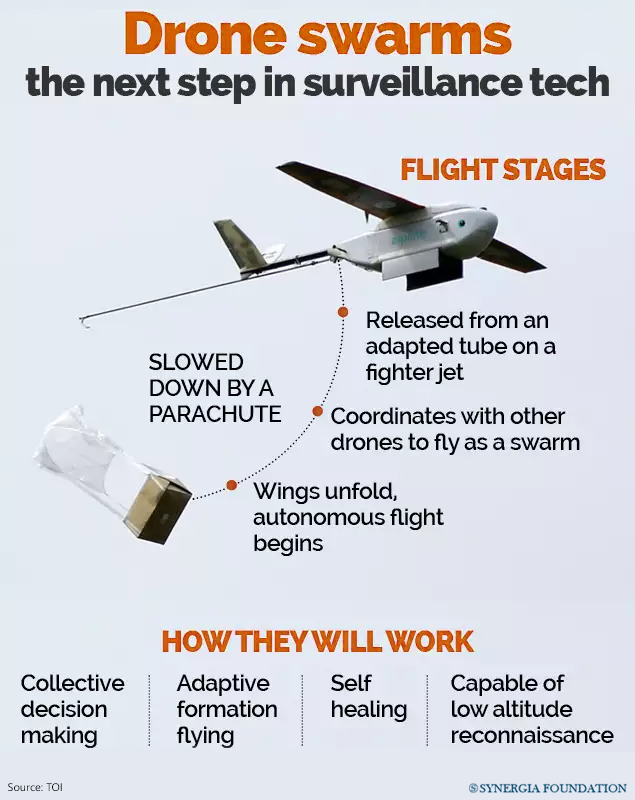Drone Warfare: Here to Stay?
August 7, 2021 | Expert Insights

The 2020 Nagorno-Karabakh war and the recent drone attacks on Indian Air Force installations in Jammu and Kashmir have displayed the irreplaceable value of armed drones in asymmetric warfare. So, what comes next in drone warfare?
BACKGROUND
An unmanned combat aerial vehicle (UCAV), also known as a combat drone, colloquially shortened as drone or battlefield UAV, is an unmanned aerial vehicle (UAV) that is used for intelligence, surveillance, target acquisition, and reconnaissance and carries aircraft ordnance such as missiles, ATGMs, and/or bombs in hardpoints for drone strikes.
Drones have been deployed in combat for decades but to varying degrees of success. Modern drones are far more capable and reliable for targeted attacks than their predecessors but drones have been a military asset since the 1970s being engaged in surveillance,Suppression of Enemy Air Defence (SEAD) and early warning roles. Drones were also used to bait enemy forces into tactical combat to distract or fatigue the troops. For instance, during the 1973 Yom Kippur War, the Israel Air Force used a drone resembling a small attack aircraft to force the Egyptian anti-air batteries to fire and exhaust their ammunition. No Israeli pilot was injured and the Air Force used this distraction to exploit the weakened Egyptian defence.
The first 'UAV war' was the first Gulf War: according to a May 1991 Department of the Navy report: "At least one UAV was airborne at all times during Desert Storm." After the Gulf War successfully demonstrated its utility, global militaries invested widely in the domestic development of combat UAVs.

ANALYSIS
The 2020 Nagorno-Karabakh conflict was characterized by the widespread use of combat drones, particularly by Azerbaijan, as well as heavy artillery barrages, rocket attacks and trench warfare. Throughout the campaign, Azerbaijan relied heavily on drone strikes against Armenian/Artsakh forces, inflicting heavy losses against Armenian tanks, artillery, air defense systems and military personnel.
Whereas, the drone attacks on IAF installations in Jammu and Kashmir came as a surprise to military experts. This is the first time that UAVs have been used to strike a vital military installation in India and a tell-tale sign that the non-state actors operating along the India-Pakistan border are willing to adapt and deploy a greater level of technology to achieve their intended targets. However, this is not the first time that non-state actors have used drones to counter conventional armed forces; During the Battle of Mosul (2016-17) it was reported that commercially available quadcopters and drones were being used by the Islamic State of Iraq and the Levant (ISIL) as surveillance and weapons delivery platforms using improvised cradles to drop grenades and other explosives.
COUNTERPOINT
The collateral damage of civilians still takes place with drone combat, although some have argued that it greatly reduces the likelihood. Although drones enable advanced tactical surveillance and up-to-the-minute data, flaws can become apparent. The U.S. drone program in Pakistan has killed several dozen civilians accidentally.
As a new weapon, drones are having unforeseen political effects. Some scholars have argued that the extensive use of drones will undermine the popular legitimacy of local governments, which are blamed for permitting the strikes. The case study for this analysis is Yemen, where drone strikes seem to be increasing resentment against the Yemeni government as well as against the U.S.
On August 6, 2020, the United States senators introduced a bill that would ban the sale of large armed drones to countries like Saudi Arabia and UAE as lawmakers are concerned that American-made weapons have been used in the war in Yemen that has left thousands of civilians dead.
The picture is further complicated if the UAV can initiate an attack autonomously, without direct human involvement. Such UAVs could possibly react more quickly and without bias but would lack human sensibility.
ASSESSMENT
- India needs a review of its drone-use policy for armed forces, especially in areas of high militancy and inaccessible terrain. Drones are being used by non-state actors to overcome the logistical and tactical difficulties in combating a conventionally armed force like the Indian Army or the CRPF.
- The rapid integration of drones into a non-state actor’s arsenal should also hasten the development of reliable countermeasures to ensure that UAVs do not overwhelm India’s defence infrastructure and logistical supply routes in sensitive areas. Existing countermeasures like anti-drone nets and shrapnel cannons may not be sufficient to counter modern jet-powered attack drones.








Comments